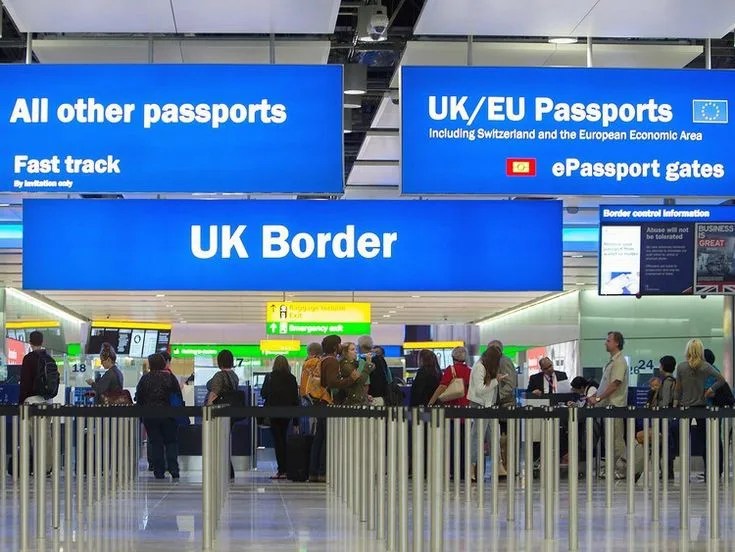Brexit has had a profound impact on the relationship between the United Kingdom and the European Union, but its ripple effects extend far beyond the UK’s borders. As the UK finalized its exit from the EU, a second wave of changes—commonly referred to as “Brexit 2.0″—is now reshaping the immigration landscape, particularly for non-EU citizens. These new developments are causing shifts in how EU countries manage immigration, work visas, and residency options for individuals from outside the EU. In this article, we’ll explore the major ways Brexit 2.0 is influencing EU immigration policies for non-EU citizens.
Table of Contents
- Introduction: The Impact of Brexit on Immigration Policies
- The Need for Revised EU Immigration Policies Post-Brexit
- The Emergence of Brexit 2.0: What’s Different Now?
- 1. Stricter Immigration Rules for Non-EU Workers
- 2. The Rise of Talent Attraction Schemes
- 3. Evolving Residency Requirements for Non-EU Citizens
- 4. UK’s Status Post-Brexit: Impact on Non-EU Immigrants
- 5. Increased Competition for Non-EU Talent
- 6. The Impact of Brexit 2.0 on Non-EU Students
- Key Tips for Non-EU Citizens
Introduction: The Impact of Brexit on Immigration Policies
The original Brexit created significant changes for UK citizens traveling to or working in the EU, but it also led to indirect consequences for non-EU nationals. Brexit 2.0 refers to the evolving set of policies and regulations that further affect the EU’s immigration framework. As the EU redefines its relationship with non-EU countries, it is revising immigration policies to adapt to new economic and social realities.

The Need for Revised EU Immigration Policies Post-Brexit
Before Brexit, the free movement of people within the EU allowed individuals from member states to live, work, and travel across borders with minimal restrictions. However, post-Brexit, the EU has had to reassess its approach to immigration, focusing not only on former UK citizens but also on the larger non-EU population. The tightening or revision of immigration laws has implications for non-EU citizens seeking work or residency in Europe.
The Emergence of Brexit 2.0: What’s Different Now?
Brexit 2.0 refers to the second phase of changes that occurred after the initial Brexit agreements were settled. This phase involves more nuanced immigration policies that address the complexities of international relations and the growing demand for non-EU workers in various European sectors. EU countries are now refining their immigration rules, with a focus on work permits, residency requirements, and skilled labor attraction.
1. Stricter Immigration Rules for Non-EU Workers
As part of Brexit 2.0, several EU countries have introduced more stringent immigration rules for non-EU citizens. With the UK no longer in the equation, the EU is implementing tighter controls on work visas and residency permits for individuals from countries outside the EU. These changes are intended to protect local labor markets, while also ensuring that the immigration system aligns with the needs of European economies.

Work Visa Restrictions
Many EU countries have introduced new work visa categories with stricter eligibility requirements. Non-EU citizens now face higher hurdles when applying for jobs within the EU, including more rigorous background checks, education qualifications, and language proficiency exams. While this may limit access for certain non-EU workers, it also provides opportunities for highly skilled professionals to enter sectors where labor shortages exist.
2. The Rise of Talent Attraction Schemes
Despite the stricter immigration rules, several EU countries are actively developing talent attraction schemes to draw skilled workers from outside the EU. These initiatives aim to address the growing demand for highly skilled professionals in industries such as technology, healthcare, and engineering. Countries like Germany, the Netherlands, and France have implemented special visa programs to facilitate the entry of highly qualified non-EU workers.
Blue Card Initiative: Easier Access for Highly Skilled Workers
The EU Blue Card initiative is one example of a program designed to streamline the immigration process for non-EU professionals. This visa allows skilled workers to live and work in an EU country with relative ease. Brexit 2.0 has prompted a revision of the Blue Card requirements, making it more attractive to non-EU citizens by offering simplified application procedures and more flexible rules for family reunification.

3. Evolving Residency Requirements for Non-EU Citizens
Residency rules for non-EU citizens are also evolving in the wake of Brexit 2.0. While some countries have made it easier for highly skilled professionals to gain residency, others have introduced stricter regulations for long-term stays. Non-EU citizens must now navigate a more complex landscape when applying for permanent residency or citizenship in an EU country.
Long-Term Residency in a Post-Brexit EU
The changes in residency policies vary from country to country, but one clear trend is that EU nations are tightening the path to long-term residency. For instance, non-EU citizens who wish to obtain permanent residency in countries like Spain or Italy now need to demonstrate more substantial economic contributions, longer periods of legal stay, and deeper integration into society.
4. UK’s Status Post-Brexit: Impact on Non-EU Immigrants
Even though the UK has left the EU, the country still plays a significant role in shaping the EU’s immigration policies. Brexit 2.0 has influenced how the EU views immigration from non-EU countries, particularly as it relates to the movement of workers and businesses between the UK and Europe. Non-EU citizens who previously relied on the UK as a gateway to the EU are now finding themselves in a more complicated situation.
Ireland as a Unique Case
One exception in the post-Brexit world is Ireland, which continues to allow the free movement of people between the UK and EU member states. This has made Ireland a popular destination for non-EU citizens who wish to work in both the UK and EU. Ireland’s immigration policies remain more flexible compared to other EU countries, providing a unique opportunity for non-EU nationals.

5. Increased Competition for Non-EU Talent
As EU countries tighten their immigration policies, competition for highly skilled non-EU workers has intensified. Countries outside the EU, including Canada, Australia, and the United States, are also vying for the same talent pool. This global competition is pushing the EU to create more competitive visa programs and make the region an attractive destination for top-tier talent.
6. The Impact of Brexit 2.0 on Non-EU Students
Brexit 2.0 has also affected immigration policies for non-EU students seeking education in Europe. Many EU countries have revised their student visa policies to make it easier for non-EU students to study and eventually transition into the local workforce. However, the process of securing post-graduation work permits has become more challenging in some EU nations.
New Opportunities for Non-EU Students
Countries like Germany and France have introduced post-study work visas to retain talent after graduation. These programs allow non-EU students to stay in the country for a set period to find employment and begin their professional careers within the EU. Brexit 2.0 has made these opportunities even more appealing as countries seek to build strong ties with international students.

7. How Non-EU Citizens Can Navigate the New Immigration Landscape
Navigating the new EU immigration landscape post-Brexit 2.0 can be challenging, but it’s not impossible. Non-EU citizens should stay informed about the latest immigration policies in their desired country, as well as the requirements for work visas, residency permits, and citizenship. Consulting with immigration experts or legal professionals can help ease the process and ensure a smooth transition to living and working in the EU.
Key Tips for Non-EU Citizens
- Research country-specific visa programs and requirements.
- Consider applying for talent attraction schemes, such as the Blue Card initiative.
- Look for countries that offer post-study work visas if you plan to pursue higher education.
- Stay up-to-date with changes in residency and work visa policies in your chosen country.

Conclusion: A New Era of EU Immigration
Brexit 2.0 has reshaped EU immigration policies in ways that are both challenging and promising for non-EU citizens. While there are stricter rules in place, many countries are actively working to attract skilled talent through specialized visa programs. As the EU adapts to the post-Brexit world, non-EU citizens have new opportunities to live, work, and thrive in Europe—provided they navigate the evolving policies with care.



